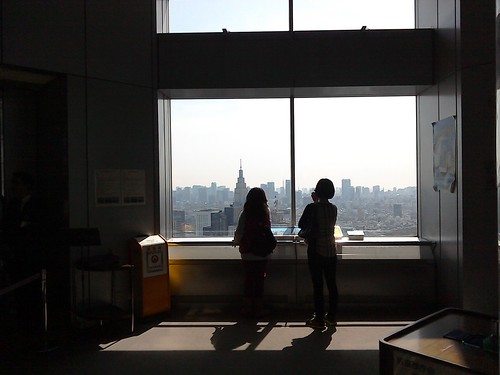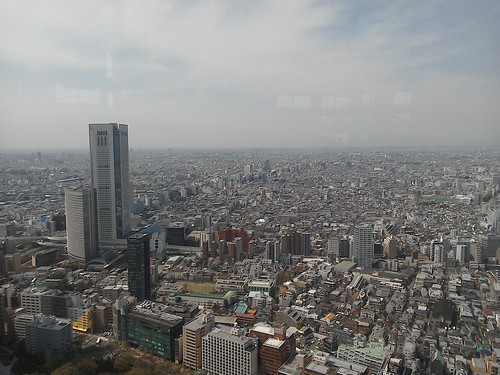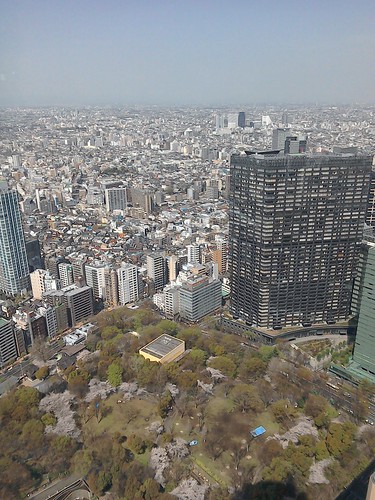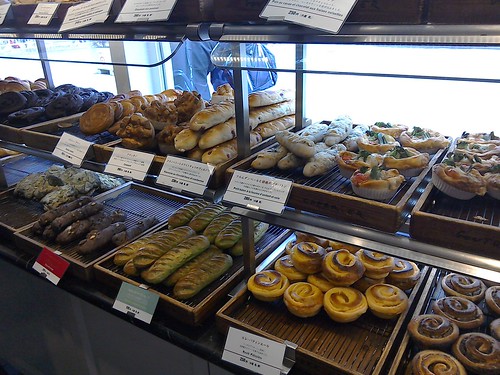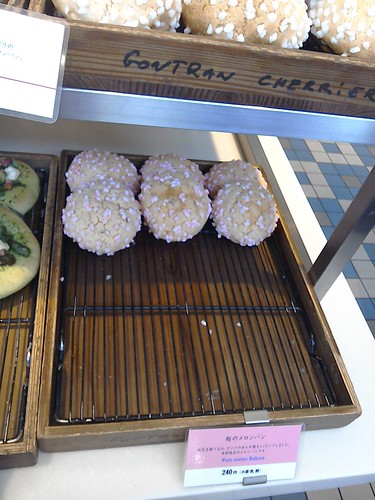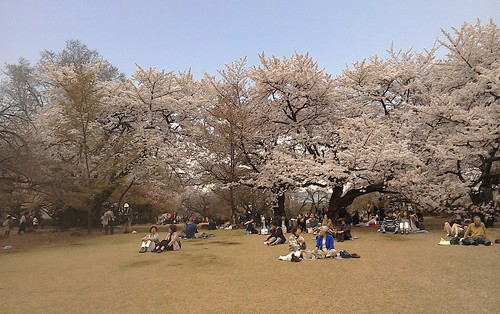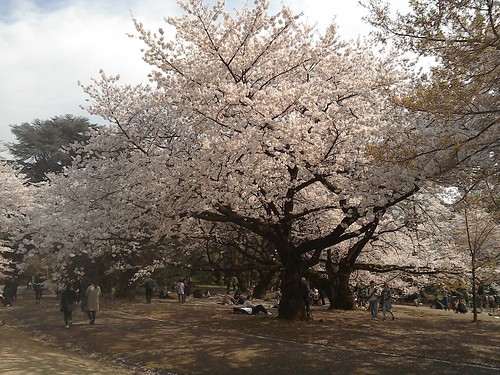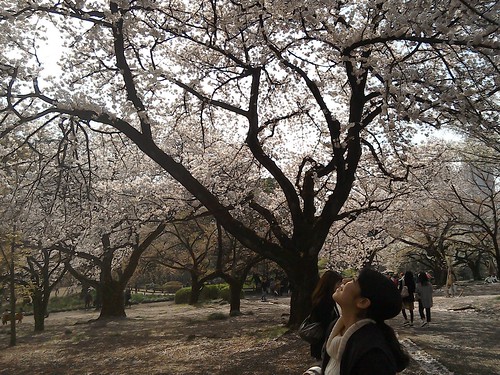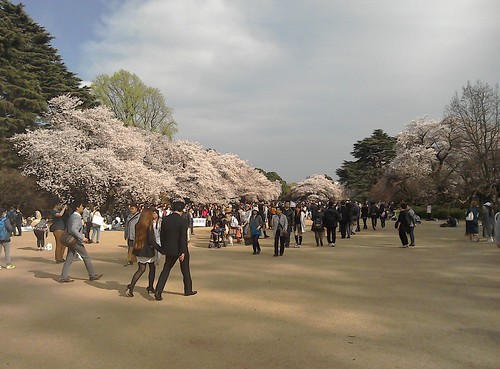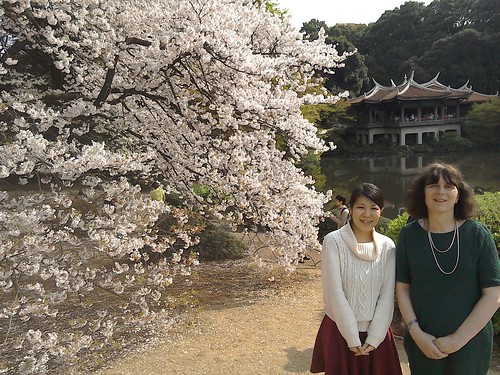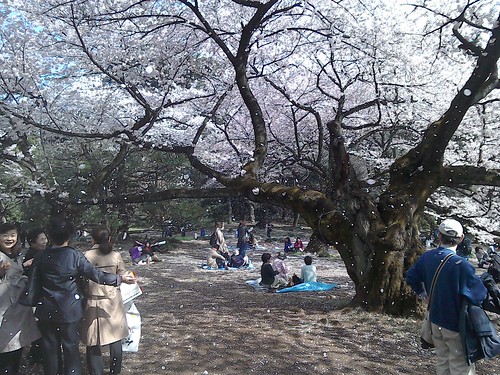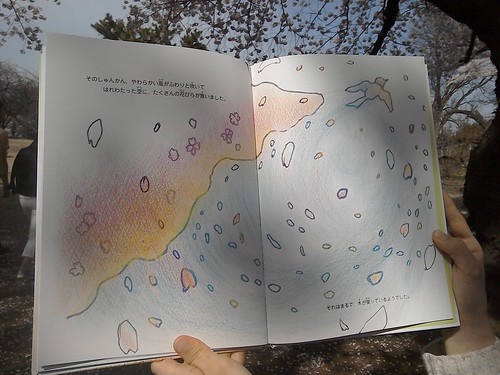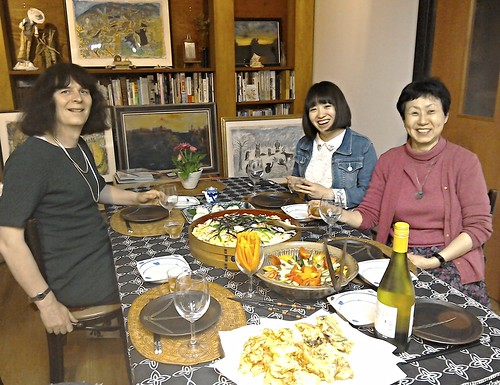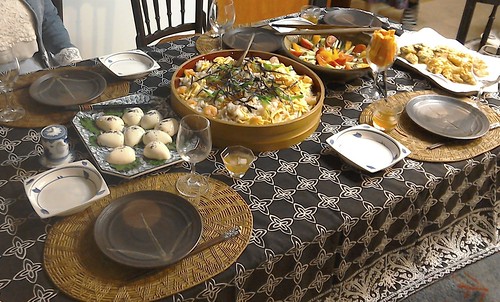Voyage to Japan 2: April 6th-7th
Apr. 9th, 2016 11:11 amSo, this was my last day. Packed as my schedule had been, there were a few things I hadn't managed to squeeze in - notably a visit to Tsukuji Fish Market, which was my last chance to see it in its iconic location, as it's moving later this year. But there really wasn't a convenient moment - and although I could have got up early in Osaka and gone to its excellent fish market instead (I mentally practised saying in a hipsterish way, "Oh yeah, everyone goes to Tsukuji, but Osaka's where it's at if you want the very freshest octopus - and no queues, man, no queues. Not many people know about it") I decided that would make me a dick. I also didn't "do" either the Tokyo Tower or the Sky Tree, but seeing that the morning of the 6th dawned bright and clear, I decided at least to walk from my Shinjuku hotel to the Tokyo Municipal Government building, the two towers of which each boasts an observation deck on the 45th floor, the visiting of which happens to be free.
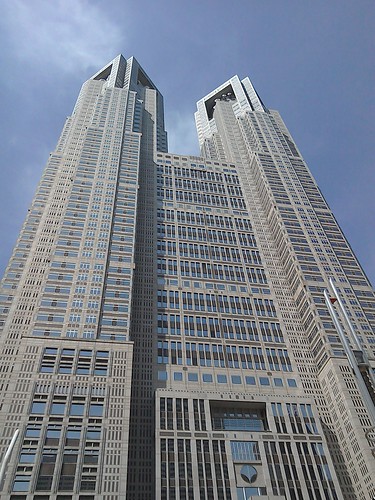
Talking of queues, it was striking how the queues to the north and south towers were so unequal. Here are the two entrances, the south on the left and the north on the right. As you can see, there's a fairly long queue for the south tower, but none at all for the north - not because it's a less impressive sight, but simply because human psychology (at least in the UK and Japan - I can't speak for other homo sapiens) compels us to join a queue. Anyway, in the absence of a queue, how would you know there was even anything worth seeing?
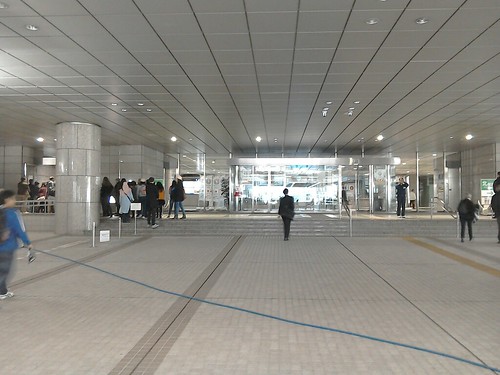
Here are a couple of sights from the top, but you can't really get the a good impression with a photo. On the horizon snowy Mount Fuji is hazily visible, but I don't think my camera will show you. But you can see the tops of the cherry trees in the park below, where later on picnickers will be hanami-ing.
In fact, today was the day I had agreed with my friend Satomi (whom I met at a conference in Worcester last year) to view cherry blossom ("hanami" means flower viewing), a big thing in Japan at this time of year. And the weather couldn't have been better for it: gentle breezes, sunshine, and a temperature of about 70F/21C. I'd originally suggested Ueno Park, since that's the one I'd heard of in connection with hanami, but Satomi's professor had suggested Shinjuku Park as a more convenient and less crowded alternative. So, I get to use my hipster voice after all, at least in the matter of park choice.
First stop was Satomi's favourite boulangerie (and she ought to know - her boyfriend's a baker), where we bought various rolls and cakes to supplement the okashi already in hand. As you might expect, a Japanese bakery is a pretty colourful place. I was taken by the matcha and yuzu baton and the squid-ink baguette - while the sakura melon buns were of course a must:
And here's the final picnic, along with one distinctively British addition (can you spot it, readers?). I admit this isn't the healthiest picnic in history, but it certainly tasted scrummy. Anyway, green tea's good for you, isn't it?
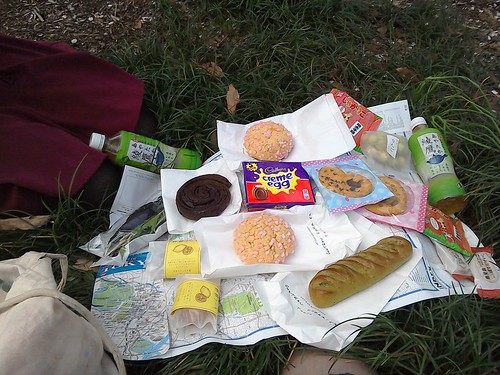
So then we did some walking and admiring what was a very beautiful park. First, I tried to get Satomi to reproduce the sakura kanji, which shows a woman standing next to a tree. The kanji woman has something on her head, which I thought might reasonably be interpreted as cherry blossom:
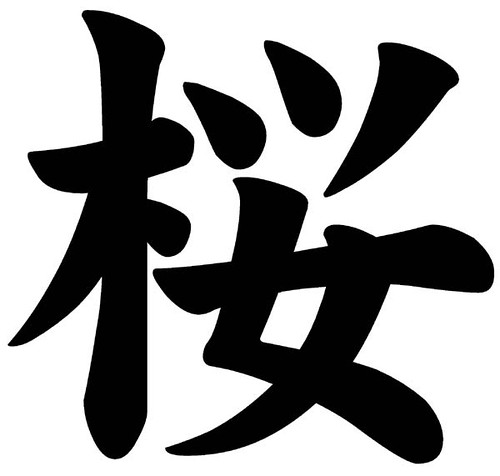
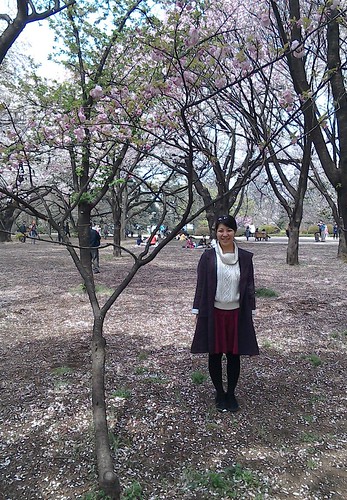
Sermons in stones, tongues in trees, and books in the running brooks, I think you'll agree. Here are some of our other hanami shots from Shinjuku Park:
Satomi showed me the picture book she's just published, about a tree as it happens. At one point, the wind blows the petals from the tree - and just as we reached that page, it happened in reality, which was magical:
Afterwards we went shopping for anime-related trinkets, especially with a Madoka Magica connection, and were pretty successful. Satomi hasn't seen the series, so of course I went into full proselytic mode, which I hope wasn't too trying for her, but in any case seeing all the Sailor Moon material was a natsukashii experience for her, I think. Then it was on to Mihoko Tanaka's house. She is the academic who wrote the book on the reception and translation of British children's fantasy in post-War Japan, which I mentioned here not long ago, and also Satomi's adviser. Mika, who had also been at the conference in Worcester, was there too, as was Mihoko's partner, who happens to be an excellent cook (as well as painter, publisher, etc.). So, it was a very convivial way to spend my last - for now! - evening in Japan. Food, since you ask, included tofu and chirashiizushi, and was absolutely delicious:
The next morning I woke early, and groped my way to the airport bus. At Narita I had a lettuce dog, in honour of Miki Sayaka, who is seen eating this meal in both Episodes 1 and 7 of Madoka Magica (including during her fateful conversation with Hitomi):
The flight back was uneventful. I watched the second Attack on Titan movie, which was even worse than the first, and also The Big Short, which I liked a lot. In between, I reflected a little on my experiences of speaking Japanese over the previous eleven days. I noticed, in my casual encounters with people on the street, three different responses to this Japanese-speaking gaijin. Let's say that I'm asking where the post office is:
1) In the first scenario, the person answers my Japanese question in Japanese. From my point of view this is ideal (as long as I understand the reply), since it's good practice and also implies that my question made sense:
Me: Anno, sumimasen. Yuubinkyoku wa doko desu ka?
Nihonjin: [Ah, a foreigner, but their Japanese appears passable] Neko Café no tonari desu ne.
Me: [Result!] Arigatou gozaimasu!
2) In the second scenario, the Japanese person recognizes that my Japanese isn't that great and answers in English. Of course, I'd rather they answered in Japanese, but I see where they're coming from:
Me: Anno, sumimasen. Yuubinkyoku wa doko desu ka?
Nihonjin: [Ah, a foreigner, I will be helpful and speak in English] It’s next to the Cat Café.
Me: [A soup of sweet and sour emotions] Arigatou gozaimasu.
3) In the third scenario, the Japanese person sees a gaijin, and cannot accept that the sounds coming out of their mouth are Japanese words:
Me: Anno, sumimasen. Yuubinkyoku wa doko desu ka?
Nihonjin: [Ah, a foreigner! What do I do? What do I do?] Wakaranai, gomenasai! [Walks speedily on.]
All three of these happened, though the last one only once.
With longer encounters in shops, I've had some excellent experiences, and the improvement in my Japanese since last year has paid dividends, but it's not always easy. I feel I need to establish my Japanese-speaking credentials quickly, so as to forestall a switch to English, and that makes me tense and hence less able to convince - but if I can get past that point, often I find myself "in the zone", and able to convey and understand (if imperfectly) quite a lot. Even so, sometimes I've been hauled back from this position, as in the following examples - where you must imagine that everything is in Japanese except the parts in inverted commas.
1) In Dazaifu, I’m considering buying some mentaiko for private consumption
Me: Do they need to be kept in a refrigerator?
Shopkeeper: Yes, although they’ll last for up to one day at room temperature.
Me: That’s a shame. I’m not sure I have a refrigerator in my hotel room. I hear they go well with plain rice, is that right?
Shopkeeper: Yes, they’re good with rice. Rice is “rice”.
Why did she need to explain that the word “gohan” meant “rice”, when I’d already used to word myself? Everything was going so well!
2) I’m looking for postcards in Kyoto. There is a stand with twelve designs, one for each month of the year, but the April section is empty. I buy two of the others anyway.
Me: I’ll take these two, please.
Shopkeeper: That’s 400 yen.
Me: By the way, do you have any with the picture for April?
Shopkeeper: Ah, the cherry blossom? No, I’m afraid we’ve sold out.
Me: Oh well. I’m not surprised. This is the season for it, after all.
Shopkeeper: Yes, we’re sold out. “Sold out.”
Again, it was pretty clear that I understood “sold out” in Japanese, so why repeat it in English? Perhaps my Japanese wasn’t perfect in these exchanges, but I’m sure it was comprehensible. I don’t find this kind of thing annoying, exactly – both these people were really friendly, and trying to be helpful – but it does subtly sap one’s confidence. I also don’t quite understand the mental processes involved. I suppose it's mostly a matter of habit.
Oh well, next time I'll know more, and these kinds of difficulties will have diminished further - is my pious hope. Anyway, now I'm back in Bristol, and just about over jet lag, and on Monday I'll be teaching again. Shikata ga nai!
